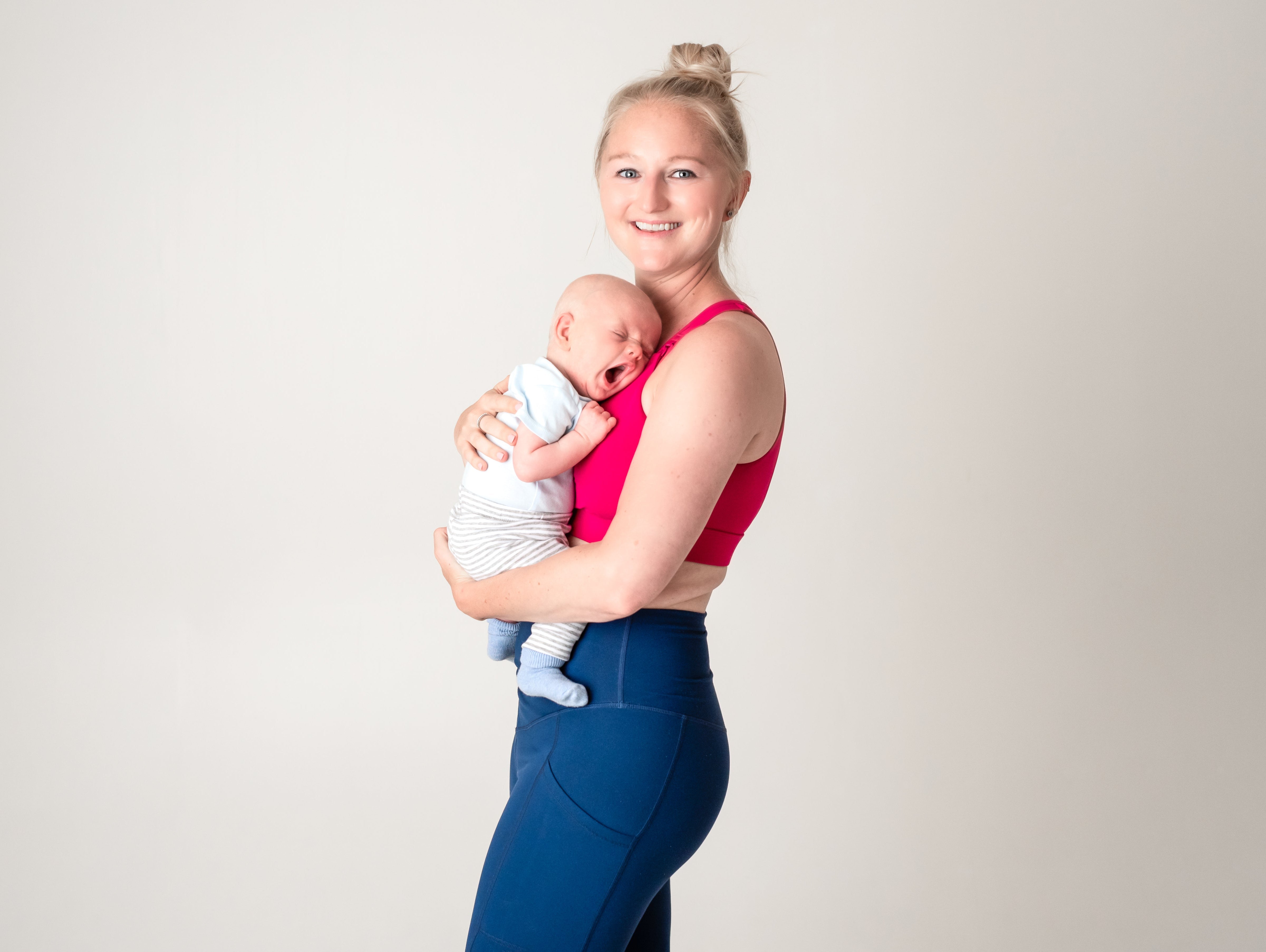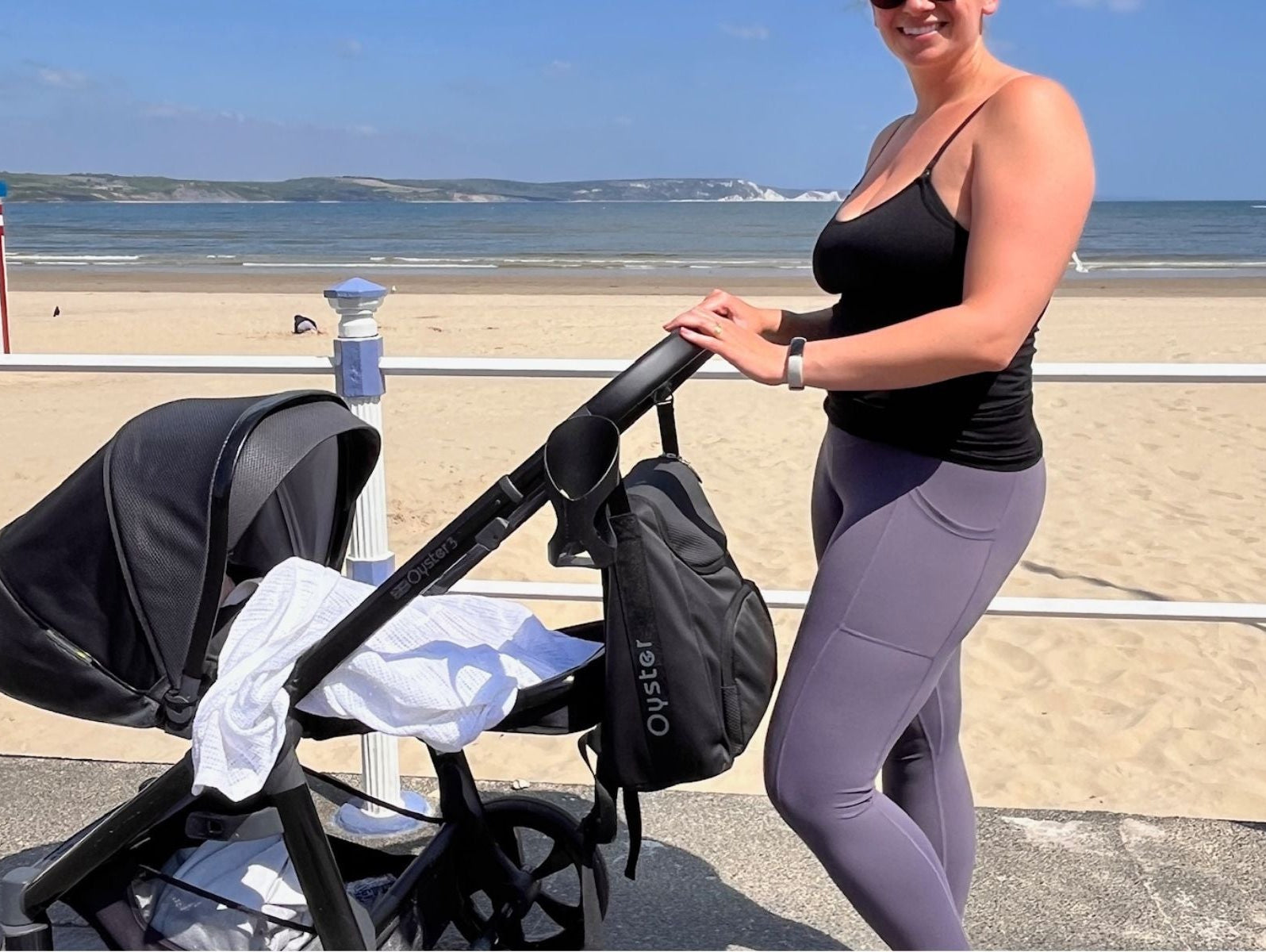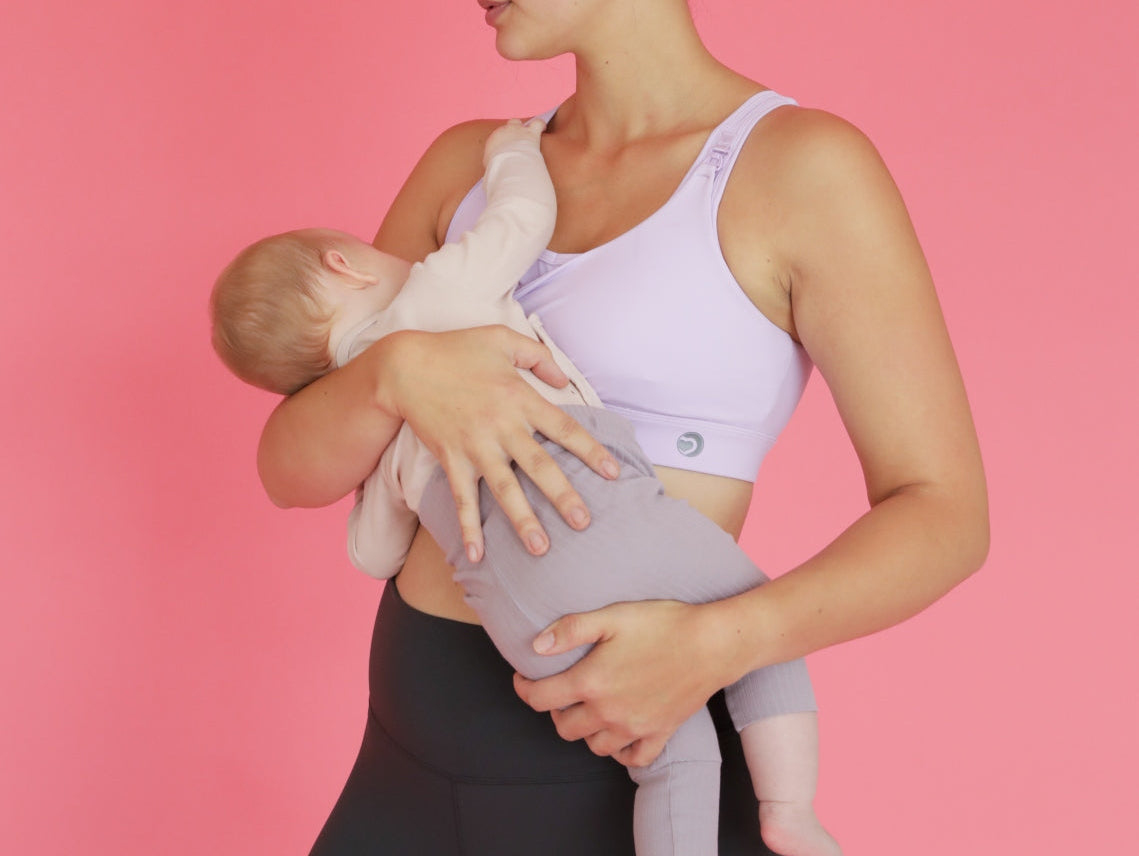With PGP affecting 1 in 4 pregnancies, pelvic health physio Lorraine Boyce shares her top tips for managing Pelvic Girdle Pain (PGP)
Pelvic Girdle Pain affects approximately 1 in 4 women in pregnancy. The onset is commonly between 14 and 30 weeks of pregnancy, but can start sooner or later than that. It can range from a mild presentation to extremely debilitating, where you can barely walk or manage your daily activities because of the pain. Some women even require crutches to mobilise. Hopefully these X tips for managing pelvic girdle pain and the information here will help prevent you from getting to that point.
Symptoms
The pain pattern can be variable, and symptoms can be widespread affecting multiple areas on both sides of your body, or very localised affecting one specific area such as the pubic symphysis joint in isolation. Other symptoms include:
- Pain at the pubic symphysis, or across the groin line
- Pain at the base of your lumbar spine
- Pain at the sacroiliac joint
- Pain in your gluteal area, or along your adductors (inner thighs)
- Pelvic girdle pain may affect both sides or just one side
You may also experience pain with:
- walking
- standing on one leg to get dressed
- climbing stairs
- getting out of bed/seats
- turning in bed
- getting out of a car
My key piece of advice is to listen to the early warning signs of pain and treat it early. It can worsen with time if not addressed and become very irritable and painful, making it more difficult to do exercises that ultimately can help.
Why does it happen?
There is still a lot of research needed as to why pelvic girdle pain affects some women and not others but some of the contributing factors can be:
- hormonal changes (Relaxin is commonly thought to be the culprit but it’s actually more related to changing Oestrogen levels during pregnancy)
- postural compensations (standing, sitting or moving differently as bump grows and your centre of gravity changes)
- repetitive daily load (are you sitting for long periods at work, or doing some repetitive action, perhaps an asymmetrical movement every day)
- joint hypermobility
- high BMI
- previous injury
- previous pregnancy (there could potentially be weakness or residual issues under the surface from a previous pregnancy or birth that were not giving you pain until your growing bump started to load your pelvis combined with the hormonal changes of pregnancy)
The more established and irritable the pain pattern becomes, the more challenging it is to get it settled and eased. The sooner you get advice and exercises, the better.
But no matter how established your pain pattern is, you can still implement movement strategies for relief.
A Pelvic Health Physio will be able to tailor a program for you, no matter whether your pain is mild or very irritable/severe. You can do isometric exercises that don’t involve any movement at all or very small range, gentle movements until pain subsides to allow you to do more dynamic exercise.
Tip one - move
You’ll likely have heard of “Don’t move and keep your legs together”, you may have been told this to manage your own pain, but is this actually a good strategy??
Yes, it may be a good idea initially to pace yourself and to avoid movements that trigger your pain, but the overall goal is not to just avoid movement entirely until the end of your pregnancy, but to improve the quality of the movement and make movement patterns more balanced, so they are less painful and you can get back to doing everything you want to do.
The risk is that we become very fearful of any and all movements causing pain, we avoid them, we become even stiffer and weaker and this contributes to even more pain when you do need to move. It becomes a vicious cycle.
Also, it’s not exactly practical! It’s not easy to always keep your legs together throughout an average busy day, especially if you’re working, have other children to mind etc. and it’s not a nice prospect to have to do that for weeks and weeks until baby arrives.
So while I do agree that keeping your legs symmetrical and together is a good idea initially to just work around any pain, it should be a short-term strategy. While actually addressing any underlying dysfunction that is causing the pain should be your longer term (and more important) strategy.
Rather than avoiding movements, we want to optimise movement, strengthen any weak muscles, release and lengthen any tight/overactive muscles and have better movement control and coordination overall.
Pain doesn’t just go when the baby arrives
Just as I don’t think ‘keeping your legs together and avoiding painful movements’ is a good strategy for managing pelvic girdle pain, the idea that the pain ‘just goes away’ when baby arrives is also something I think we need to look at.
When baby arrives, the pressure of the bump is reduced, hormones will start to change and you may feel ease from the pain, and naturally enough, you may think that it’s gone away, but the dysfunctional movement pattern that caused the pain to be there in the first place is likely still there, e.g. weak glutes, a certain postural alignment, weak core.
Get properly assessed postnatally
Having been in pain for so long over the weeks when you were pregnant will also have caused compensations, where your body works around the pain that’s there, but compensatory patterns are not good for us in the long term. This is why getting a thorough postnatal check up with a Pelvic Health Physio is so beneficial to screen your pelvic girdle, hips, pelvic floor, abdominal muscles and so much more. It’ll pick up any areas that you need to work on to restore balance and hopefully avoid issues in the future, when you get back to exercise or if you become pregnant again.
A postnatal check up is generally an hour long and is a dedicated time for you to talk through any issues you’re having and to support your recovery after having had pelvic girdle pain.
Do certainly seek the advice of a Pelvic Health Physio both during pregnancy and afterwards for pelvic girdle pain and check out my workout on the Natal Active Instagram grid designed to help relieve your symptoms.
Written by Lorrain Boyce, Down Below Physio
Lorraine is a Pelvic Health Physio who treats women for symptoms of PGP and more. Check out her website www.downbelowphysio.ie for other online programmes for pelvic girdle pain and postnatal recovery.




